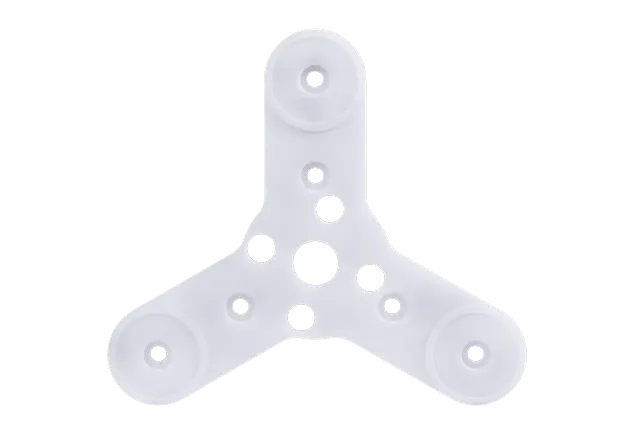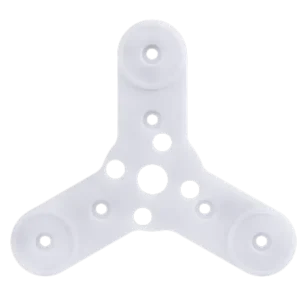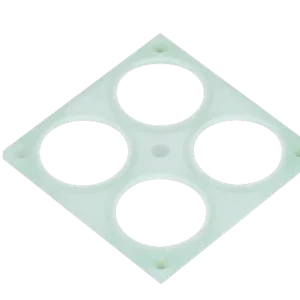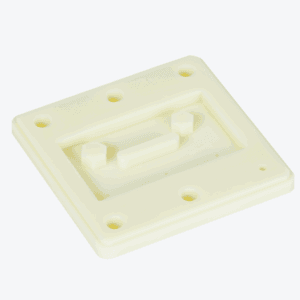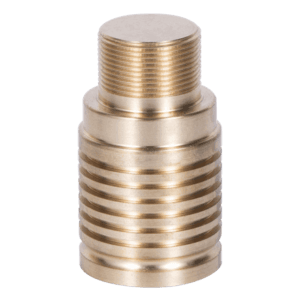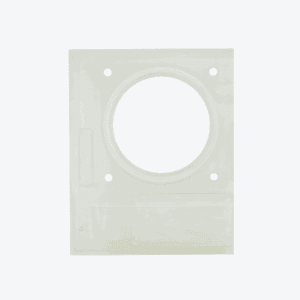Polyoxymethylene, commonly abbreviated as POM-C, is a polymer derived from the polymerization of formaldehyde. This polymer typically exhibits a low degree of polymerization and is prone to thermal depolymerization. In 1955, DuPont successfully produced formaldehyde homopolymer through formaldehyde polymerization. POM-C is characterized by its high crystallinity, often exceeding 70%, with a melting temperature of approximately 180°C.
Mechanical Properties
Density: 1.45 g/cm³
Volume Resistance (VDE0303): ≥ 10¹⁵ Ω·cm
Water Absorption: 0.8%
Surface Resistance (VDE0303): ≥ 10¹³ Ω
Dielectric Constant (1 MHz, DIN53483): 3.8
Continuous Use Temperature: -50 to 90°C
Dielectric Loss Factor (1 MHz, DIN53483): 0.005
Yield Tensile Strength: 62 MPA
Dielectric Strength (VDE0303): 85 kV/mm
Yield Tensile Strain: 10%
Ultimate Tensile Strength: Not specified
Ultimate Tensile Strain: 40%
Impact Toughness: 0.8 kJ/m²
Notched Impact Toughness: 7 kJ/m²
Rockwell Ball Hardness: 135 MPA
Shore D Hardness: 85
Flexural Strength: Not specified
Modulus of Elasticity: 2600 MPA
Vicat Softening Temperature: 150°C
Thermal Conductivity (20°C): 0.31 W/(m·K)
Chemical Resistance
Acid Resistance: Good
Alkali Resistance: Good
Resistance to Aromatic Compounds: Moderate
Ketone Resistance: Moderate
Carbonic Acid Resistance: Moderate
Thermal Water Resistance: Moderate
Heat Treatment
Drying Treatment: Generally not required if stored in a dry environment.
Melting Temperature: 190–230°C for homopolymer; 190–210°C for copolymer.
Mold Temperature: 80–105°C, with higher temperatures reducing shrinkage.
Injection Pressure: 700–1200 bar.
Injection Speed: Medium speed is preferred; too slow may cause ripples, too fast may cause shot lines and shear overheating.
Runners and Gates: Any type can be used; shorter tunnel-shaped gates are recommended for homopolymer materials.
Back Pressure: Keep low, generally no more than 200 bar.
Retention Time: For POM-H, retain at 215°C for 35 minutes; for POM-K, retain at 205°C for 20 minutes without serious decomposition. POM-K can stay in the barrel for 7 minutes at 240°C; if the machine stops, reduce the barrel temperature to 150°C.
Shutdown and Cleaning
Shutdown Procedure: Clean the barrel with PE or PP, turn off electric heat, and push the screw to the front position. Ensure the barrel and screw remain clean to avoid contamination, which can affect the stability of POM (especially POM-H). If using halogen-containing or acidic polymers, clean with PE before processing POM to prevent explosions. Improper pigments or materials containing GF nylon can lead to degradation.
Post-Treatment
For parts requiring high temperature resistance and quality, perform heat treatment. Annealing can be checked by immersing the product in a 30% hydrochloric acid solution for 30 minutes to identify any residual stress cracks visually.
Bestellvorgang
Q1: So senden Sie eine Verarbeitungsanfrage?A: Sie können uns über WhatsApp kontaktieren: +86 15323729231 oder E -Mail [email protected].B: Wir unterstützen die Dateiformate der Stufen-/Stl/IGES -Dateiformate. Sie können Ihre Dateien auch an unsere Service -E -Mail senden. Unser System generiert ein Angebot und eine Prozessempfehlungen innerhalb 1 Stunde.
Q2: Stellen Sie Entwurfsoptimierungsvorschläge an?A: Ja! Unser Engineering -Team bietet ein kostenloses DFM (Design für die Herstellung) Rezension, Bereitstellung von Optimierungsvorschlägen zur Verbesserung der Struktur und zur Reduzierung der Kosten.
Preisgestaltung & Lieferung
Q3: Was ist die minimale Bestellmenge (MOQ)?A: Kein MOQ! Wir akzeptieren Bestellungen aus 1 Stück, ob für 3D -Druck- oder CNC -Bearbeitung.
Q4: Was ist im Zitat enthalten?A: Das Angebot deckt die Materialkosten ab, Verarbeitungsgebühren, und grundlegende Oberflächenbehandlung (Z.B., Sandstrahlen). Zusätzliche Prozesse (Z.B., elektroplierend, Anodisierung) wird separat zitiert.
Q5: Was ist die Standardvorlaufzeit??
- CNC -Bearbeitung: 3-5 Tage (bis zu 7 Tage für komplexe Teile)
- 3D Druck: 72 Std.
Technologie & Qualität
Q6: Was ist die Bearbeitungsgenauigkeit??
- CNC -Bearbeitung: Schnelles Prototyping mit einer ± 0,05 mm -Toleranz, 0.1MM Form -Toleranz, und Oberflächenrauheit ra1.6 oder besser.
- 3D Druck:
- Harzteile: ± 0,2 mm
- Nylonteile: ± 0,3 mm
- Kunststoffteile: ± 0,3 mm
- Metallteile: ± 0,3 mm
Q7: Welche Materialien unterstützen Sie??✅ CNC -Bearbeitung:
- Aluminiumlegierung: 6061, 7075
- Kupferlegierung: Messing (H59), Rotkupfer (T2)
- Legierungsstahl: 45# Stahl
- Edelstahl: Sus304
- Kunststoff:
- ABS (Weiß, Schwarz)
- Pom (Weiß, Schwarz)
- Bakelit (Schwarz, Orange)
- Acryl (Transparent)
- FR4 Epoxy Board (Grün)
- PA6 Nylon (Weiß)
- Polycarbonat (Transparent)
✅ 3D -Druck:
- Harz, Nylon, Technische Kunststoffe, Edelstahl
After-Sales-Service
Q8: Was ist, wenn die Teile den Anforderungen nicht erfüllen??A: Wenn Mängel aufgrund unserer Verarbeitungsprobleme auftreten, Wir garantieren eine kostenlose Wiederaufbereitung.

